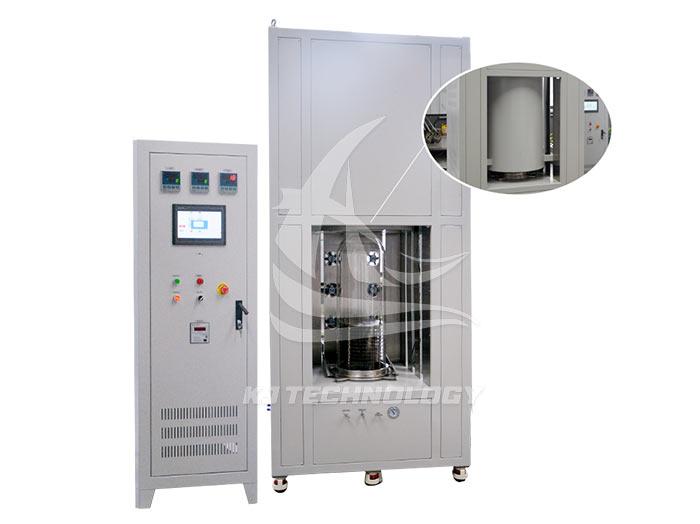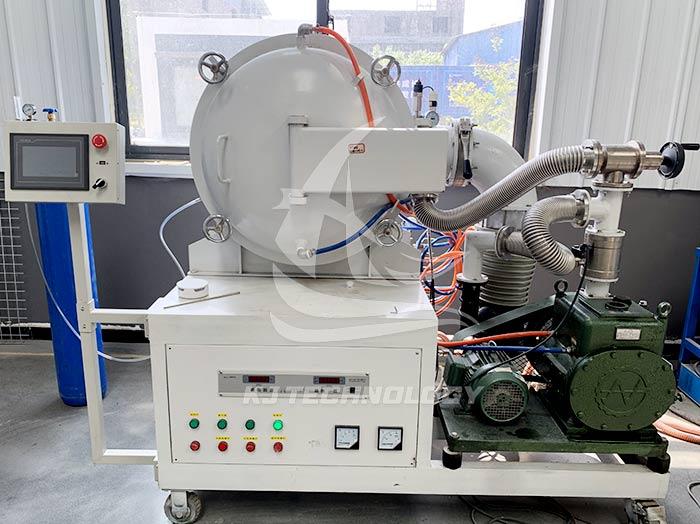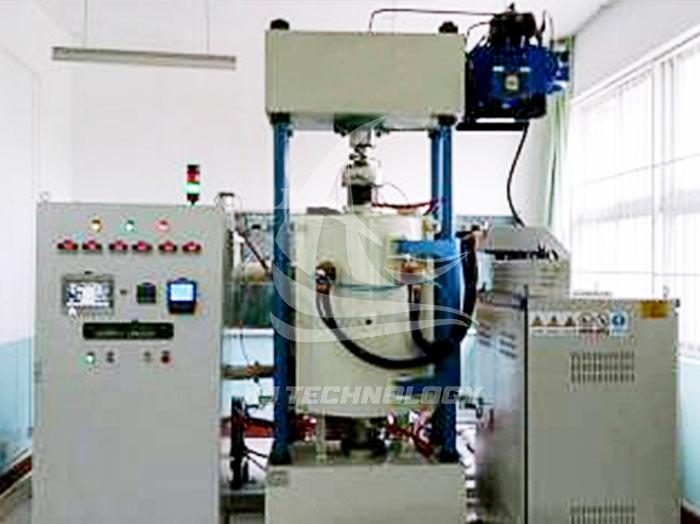Can a vacuum annealing furnace be filled with protective gas?
 05-15-2025 Author: KJ technology
05-15-2025 Author: KJ technology
The vacuum annealing furnace can be filled with protective gas, and the use of protective gas has significant advantages under specific process requirements. The following analysis will be conducted from the aspects of technical principles, application scenarios, gas selection, and operational points:
1. Technical principle: synergistic effect of vacuum and protective gas
The role of vacuum environment
The vacuum annealing furnace removes active gases such as oxygen and water vapor inside the furnace by vacuuming (pressure ≤ 10 ⁻ ³ Pa), preventing metal oxidation and decarburization, especially suitable for highly active metals (such as titanium and zirconium) and precision parts.
The supplementary function of protective gas
After vacuum pretreatment, inert gases (such as argon and nitrogen) or reducing gases (such as hydrogen) can be introduced to achieve the following functions:
Rapid cooling: Inert gas can accelerate workpiece cooling and shorten the process cycle.
Atmosphere control: Hydrogen is used to reduce metal surface oxide films, while nitrogen is used to suppress nitriding reactions.
Pressure control: Adjust the pressure inside the furnace to avoid workpiece deformation or vacuum pump overload.
2. Typical application scenarios
High activity metal treatment
Annealing of titanium alloy: After vacuum pretreatment, argon gas is introduced to prevent titanium from reacting with residual oxygen at high temperatures to generate TiO ₂.
Bright annealing of copper alloy: introducing a mixture of nitrogen and hydrogen gas (volume ratio 95:5) to remove the surface oxide layer and obtain a mirror like luster.
Anti deformation of large workpieces
Aircraft engine blades: After vacuum heating, argon gas is filled to 0.1MPa to balance the pressure inside and outside the furnace and avoid deformation of thin-walled parts.
Special atmosphere requirements
Annealing of magnetic materials: High purity hydrogen gas (purity ≥ 99.999%) is introduced to reduce the coercivity of the material from 100A/m to 15A/m, significantly improving its magnetic properties.
Stainless steel solution treatment: nitrogen gas is introduced to prevent the precipitation of chromium nitrides and ensure corrosion resistance.
3. Operation points and safety regulations
process design
Typical steps: Vacuumize (to 10 ⁻³ Pa) → Heat to target temperature (such as 800 ℃) → Introduce protective gas (to 0.05-0.1MPa) → Keep warm → Cool or quench with furnace.
Gas purity control
Use an online dew point meter to monitor moisture content (required to be ≤ -60 ℃), and an oxygen analyzer to monitor residual oxygen content (≤ 1ppm).
Safety protection measures
Hydrogen usage: The grounding resistance of the furnace body is ≤ 1 Ω, equipped with explosion-proof solenoid valves and automatic fire extinguishing systems.
Pressure monitoring: Install dual pressure gauges (mechanical and electronic) to automatically release pressure when overpressure occurs.
Equipment adaptability transformation
Add a gas mass flow controller (MFC) to achieve precise flow control (error ≤± 0.5% F.S.).
The furnace door seal adopts all metal corrugated pipes, with a pressure resistance of 0.2MPa and a leakage rate of ≤ 1 × 10 ⁻⁹ Pa · m ³/s.
4.Conclusion
Introducing protective gas into a vacuum annealing furnace is a technically feasible and economically efficient process solution, especially suitable for the following scenarios:
Highly active metals: materials such as titanium, zirconium, niobium, etc. that require strict avoidance of oxidation.
Performance sensitive materials: magnetic materials, superhard materials, and other workpieces that require strict microstructure requirements.
Large thin-walled parts: parts that require gas pressure balance to prevent deformation.
Suggestion: Based on material characteristics, process objectives, and cost budget, prioritize choosing argon or nitrogen as the base protective gas, and use hydrogen only with caution when necessary. At the same time, high-precision gas control systems and safety protection devices are required to ensure process stability and operational safety.








